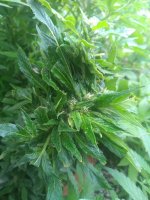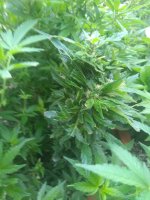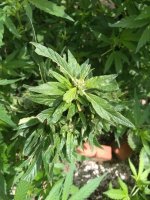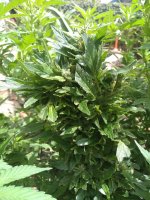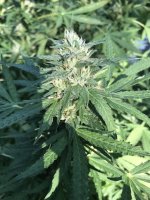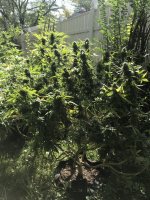RichieRich6988
Well-Known Member
I was enlightened by a few well known members about a Mutation I currantly have in my outdoors garden. They said it was a pollyploid. Its been a realy long time since I took Biology in College so I googled it. here is some info I found on them.
Polyploidy is a condition in which the cell has more than two copies of the haploid genome.
Polyploidy in Evolution
Polyploidy, involving the presence of multiple copies of identical or similar chromosome sets in one species, is an important feature of species evolution in the plant, animal, and fungal kingdoms. Polyploidy is widely considered to be an enabling force in evolution. Because chromosome sets are duplicated in polyploids, heterozygosity may be fixed, and random mutation or factors modulating gene expression may be buffered (unlike a diploid), so new genes and gene functions may evolve, leaving the original function in the other chromosome set.
Polyploidy is seen in many angiosperm plant species, and the related diploid species can be readily identified. More than 50% of all plants are obvious polyploids, while detailed studies are showing that many other species are crypto- or paleopolyploids. Polyploidy is rare in the other major plant group, gymnosperms. In animals and fungi, detailed comparison of the gene content of chromosomes combined with comparative analysis of chromosomes and genes in distantly related species enables the suggestion of paleopolyploidy to be made.
Manipulation of Ploidy Level☆
L. Crespel, J. Meynet, in Reference Module in Life Sciences, 2017
Meiotic Polyploidization
Sexual polyploidization is the process by which a polyploid zygote is formed by natural fertilization involving 2n gametes. The case of interploidy crosses (eg, 2x–4x or 4x–2x), where one 2n gamete fertilizes a normally reduced gamete has been termed “unilateral polyploidization,” whereas “bilateral polyploidization” is characterized by the fusion of two 2n gametes (as might occur in a 2x–2x cross). Depending on its origin, a single 2n gamete may convey little or nearly all of the heterozygosity present in somatic cells. In order to maximize heterozygosity in the polyploid progeny produced by sexual polyploidization, the use of FDR type gametes is preferable to the use of SDR gametes.
In roses, 2n gametes produced by dihaploid rose cultivars and their diploid hybrids were used to obtain new tetraploid genotypes through unilateral polyploidization. The percentage of tetraploid progenies obtained varied from 28.5 to 100% depending on the dihaploid parent used; it was 42.1% for dihaploid hybrid used as male parent. The number of tetraploids obtained was much higher than expected in that the percentage of 2n pollen grains estimated. This difference could be explained by the greater germination capacity of 2n pollen at the time of pollination due to the more rapid growth of their pollen tube compared to that of n pollen, as shown between diploid and haploid pollen grains.
In the past 20 years, polyploidy became widely recognized as an important mode of plant speciation and a number of intensive and extensive studies that were done using model systems provided novel insights into the genetic underpinning of polyploidy. As a consequence, a drastic conceptual renovation came about: polyploidy, which once was considered as mere addition of genomes, is now viewed as the product of a highly dynamic process in which restructuring of the transcriptome, metabolome, and proteome occurs through various genetic, epigenetic, and genomic changes (Leitch and Leitch, 2008).
Recent advances in characterizing the genetic, epigenetic, and genomic mechanisms for polyploidization have provided empirical backing for the recognition of polyploidy as a major driving force in plant diversification. The global genome restructuring that occurs during polyploidization may confer, in addition to reproductive isolation, novel phenotypes that open avenues for exploiting fitness peaks in an adaptive landscape. However, to better understand the significance of polyploidy in the broad picture of plant evolution, several other genetic and ecological aspects of polyploid speciation must further be learned because polyploid speciation is a complex process that includes a variety of mechanisms ranging from species crosses and viable hybrid formation to spontaneous genome doubling, fertility restoration, and the establishment of new polyploids as persisting entities in an ecosystem.
The primary aim of this chapter is to consider how the modern framework for understanding the genetic mechanisms of speciation could be used to study the evolution through allopolyploidy, that is, a type of polyploidy that results from interspecific hybridization and subsequent genome doubling. For this, we focus on a distinctive mode of allopolyploid speciation and attempt to evaluate what kind of roles such well-known speciation/reproductive mechanisms as prezygotic barriers, postzygotic barriers, unreduced gamete production, and genome alteration may have in the process. In Section 2, we first review the recent advances in understanding why plant polyploid species are so ubiquitous and introduce an emerging view for the origin of their remarkable diversity (Section 2.1). Then, the terminology for describing the types of polyploids and the categories for classifying plant polyploids are outlined (Section 2.2). We also outline the genetic and ecological mechanisms that may have positive or negative impacts on the process of allopolyploid speciation (Section 2.3) and point out a mode of allopolyploid speciation that is characterized by the occurrence of whole genome doubling typically through the union of male and female unreduced gametes produced by the F1 hybrid of the parental individuals (Section 2.4). In this chapter, we call this mode “allopolyploid speciation through the hybrid genome doubling (HGD) pathway.” Subsequently, common wheat (Triticum aestivum L.) and its relatives are introduced as a usable model system for allopolyploid speciation studies (Section 2.5). In Sections 3–5, the current status of the studies on the genetic mechanisms that underline allopolyploid speciation through the HGD pathway is discussed.
During the last 50 years, a large body of genetic and cytogenetic work has been done on various intriguing reproductive phenomena of wheat interspecific hybrids. In our view, those phenomena deserve a renewed attention from the standpoint of evolution because they can provide valuable insights into the genetic mechanisms for allopolyploid speciation. For this reason, special emphasis is put on the results from the wheat studies in Sections 3–5 to show their significance in understanding the genetic underpinning of allopolyploid evolution, referring to the relevant work that was done using other model plant systems. The discussion that we present herein highlights the fertile field of polyploid research where plant speciation studies meet reproduction biology and underscores the need for further development of empirical and theoretical basis for “hybrid genetics” that can deal with the highly diverse Mendelian and non-Mendelian mechanisms for the complex phenotype expression in interspecific hybrids.
Well I hope that was enough information produced by Sciencedirect.com.
So lets hear your stories on your Pollyploids.









Polyploidy is a condition in which the cell has more than two copies of the haploid genome.
Polyploidy in Evolution
Polyploidy, involving the presence of multiple copies of identical or similar chromosome sets in one species, is an important feature of species evolution in the plant, animal, and fungal kingdoms. Polyploidy is widely considered to be an enabling force in evolution. Because chromosome sets are duplicated in polyploids, heterozygosity may be fixed, and random mutation or factors modulating gene expression may be buffered (unlike a diploid), so new genes and gene functions may evolve, leaving the original function in the other chromosome set.
Polyploidy is seen in many angiosperm plant species, and the related diploid species can be readily identified. More than 50% of all plants are obvious polyploids, while detailed studies are showing that many other species are crypto- or paleopolyploids. Polyploidy is rare in the other major plant group, gymnosperms. In animals and fungi, detailed comparison of the gene content of chromosomes combined with comparative analysis of chromosomes and genes in distantly related species enables the suggestion of paleopolyploidy to be made.
Manipulation of Ploidy Level☆
L. Crespel, J. Meynet, in Reference Module in Life Sciences, 2017
Meiotic Polyploidization
Sexual polyploidization is the process by which a polyploid zygote is formed by natural fertilization involving 2n gametes. The case of interploidy crosses (eg, 2x–4x or 4x–2x), where one 2n gamete fertilizes a normally reduced gamete has been termed “unilateral polyploidization,” whereas “bilateral polyploidization” is characterized by the fusion of two 2n gametes (as might occur in a 2x–2x cross). Depending on its origin, a single 2n gamete may convey little or nearly all of the heterozygosity present in somatic cells. In order to maximize heterozygosity in the polyploid progeny produced by sexual polyploidization, the use of FDR type gametes is preferable to the use of SDR gametes.
In roses, 2n gametes produced by dihaploid rose cultivars and their diploid hybrids were used to obtain new tetraploid genotypes through unilateral polyploidization. The percentage of tetraploid progenies obtained varied from 28.5 to 100% depending on the dihaploid parent used; it was 42.1% for dihaploid hybrid used as male parent. The number of tetraploids obtained was much higher than expected in that the percentage of 2n pollen grains estimated. This difference could be explained by the greater germination capacity of 2n pollen at the time of pollination due to the more rapid growth of their pollen tube compared to that of n pollen, as shown between diploid and haploid pollen grains.
In the past 20 years, polyploidy became widely recognized as an important mode of plant speciation and a number of intensive and extensive studies that were done using model systems provided novel insights into the genetic underpinning of polyploidy. As a consequence, a drastic conceptual renovation came about: polyploidy, which once was considered as mere addition of genomes, is now viewed as the product of a highly dynamic process in which restructuring of the transcriptome, metabolome, and proteome occurs through various genetic, epigenetic, and genomic changes (Leitch and Leitch, 2008).
Recent advances in characterizing the genetic, epigenetic, and genomic mechanisms for polyploidization have provided empirical backing for the recognition of polyploidy as a major driving force in plant diversification. The global genome restructuring that occurs during polyploidization may confer, in addition to reproductive isolation, novel phenotypes that open avenues for exploiting fitness peaks in an adaptive landscape. However, to better understand the significance of polyploidy in the broad picture of plant evolution, several other genetic and ecological aspects of polyploid speciation must further be learned because polyploid speciation is a complex process that includes a variety of mechanisms ranging from species crosses and viable hybrid formation to spontaneous genome doubling, fertility restoration, and the establishment of new polyploids as persisting entities in an ecosystem.
The primary aim of this chapter is to consider how the modern framework for understanding the genetic mechanisms of speciation could be used to study the evolution through allopolyploidy, that is, a type of polyploidy that results from interspecific hybridization and subsequent genome doubling. For this, we focus on a distinctive mode of allopolyploid speciation and attempt to evaluate what kind of roles such well-known speciation/reproductive mechanisms as prezygotic barriers, postzygotic barriers, unreduced gamete production, and genome alteration may have in the process. In Section 2, we first review the recent advances in understanding why plant polyploid species are so ubiquitous and introduce an emerging view for the origin of their remarkable diversity (Section 2.1). Then, the terminology for describing the types of polyploids and the categories for classifying plant polyploids are outlined (Section 2.2). We also outline the genetic and ecological mechanisms that may have positive or negative impacts on the process of allopolyploid speciation (Section 2.3) and point out a mode of allopolyploid speciation that is characterized by the occurrence of whole genome doubling typically through the union of male and female unreduced gametes produced by the F1 hybrid of the parental individuals (Section 2.4). In this chapter, we call this mode “allopolyploid speciation through the hybrid genome doubling (HGD) pathway.” Subsequently, common wheat (Triticum aestivum L.) and its relatives are introduced as a usable model system for allopolyploid speciation studies (Section 2.5). In Sections 3–5, the current status of the studies on the genetic mechanisms that underline allopolyploid speciation through the HGD pathway is discussed.
During the last 50 years, a large body of genetic and cytogenetic work has been done on various intriguing reproductive phenomena of wheat interspecific hybrids. In our view, those phenomena deserve a renewed attention from the standpoint of evolution because they can provide valuable insights into the genetic mechanisms for allopolyploid speciation. For this reason, special emphasis is put on the results from the wheat studies in Sections 3–5 to show their significance in understanding the genetic underpinning of allopolyploid evolution, referring to the relevant work that was done using other model plant systems. The discussion that we present herein highlights the fertile field of polyploid research where plant speciation studies meet reproduction biology and underscores the need for further development of empirical and theoretical basis for “hybrid genetics” that can deal with the highly diverse Mendelian and non-Mendelian mechanisms for the complex phenotype expression in interspecific hybrids.
Well I hope that was enough information produced by Sciencedirect.com.
So lets hear your stories on your Pollyploids.



 Enjoy her and thanks for sharing
Enjoy her and thanks for sharing 
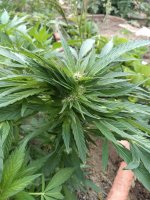
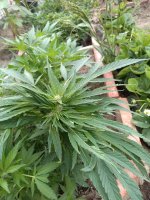
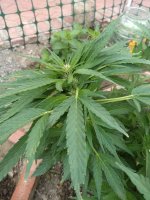
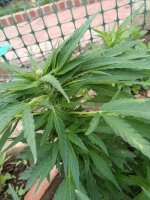
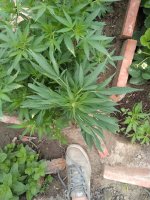
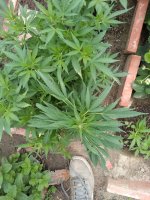
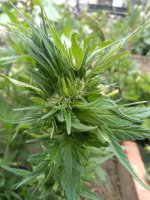
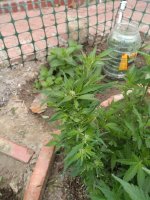
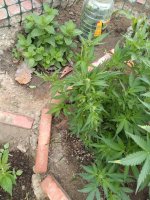
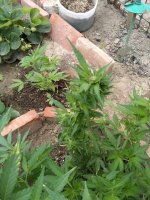

![IMG_20190608_183355743[1].jpg](/community/data/attachments/1822/1822059-d111ff20d9cea804f2f6210500b538eb.jpg)
![IMG_20190608_183407831[1].jpg](/community/data/attachments/1822/1822060-c15a45ab7c10a505816224f9d78a46b3.jpg)
![IMG_20190608_183449939[1].jpg](/community/data/attachments/1822/1822061-19bfc0e0bb3b85ae3c67e87c0195cd30.jpg)
![IMG_20190608_183407831[2].jpg](/community/data/attachments/1822/1822063-c15a45ab7c10a505816224f9d78a46b3.jpg)
![IMG_20190511_211155520_HDR[1].jpg](/community/data/attachments/1822/1822070-7d981bf1bbb98de58bef2d96cfd54c8a.jpg)
![IMG_20190615_155922[1].jpg](/community/data/attachments/1822/1822082-2a98ddd32e9388155ee68d8b555a8e8c.jpg)
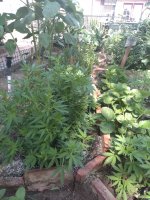
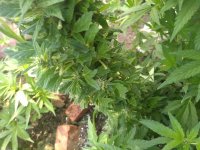
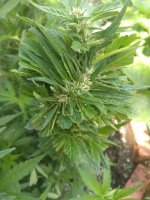
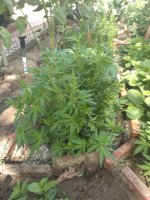
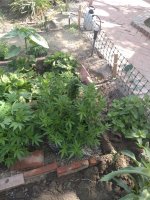
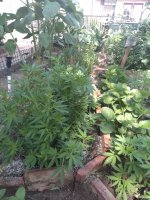
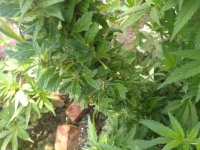
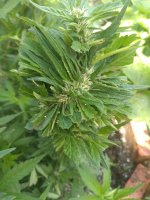
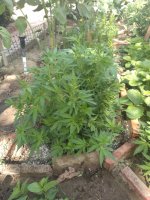
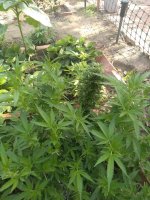
 Growing like crazy.
Growing like crazy.
